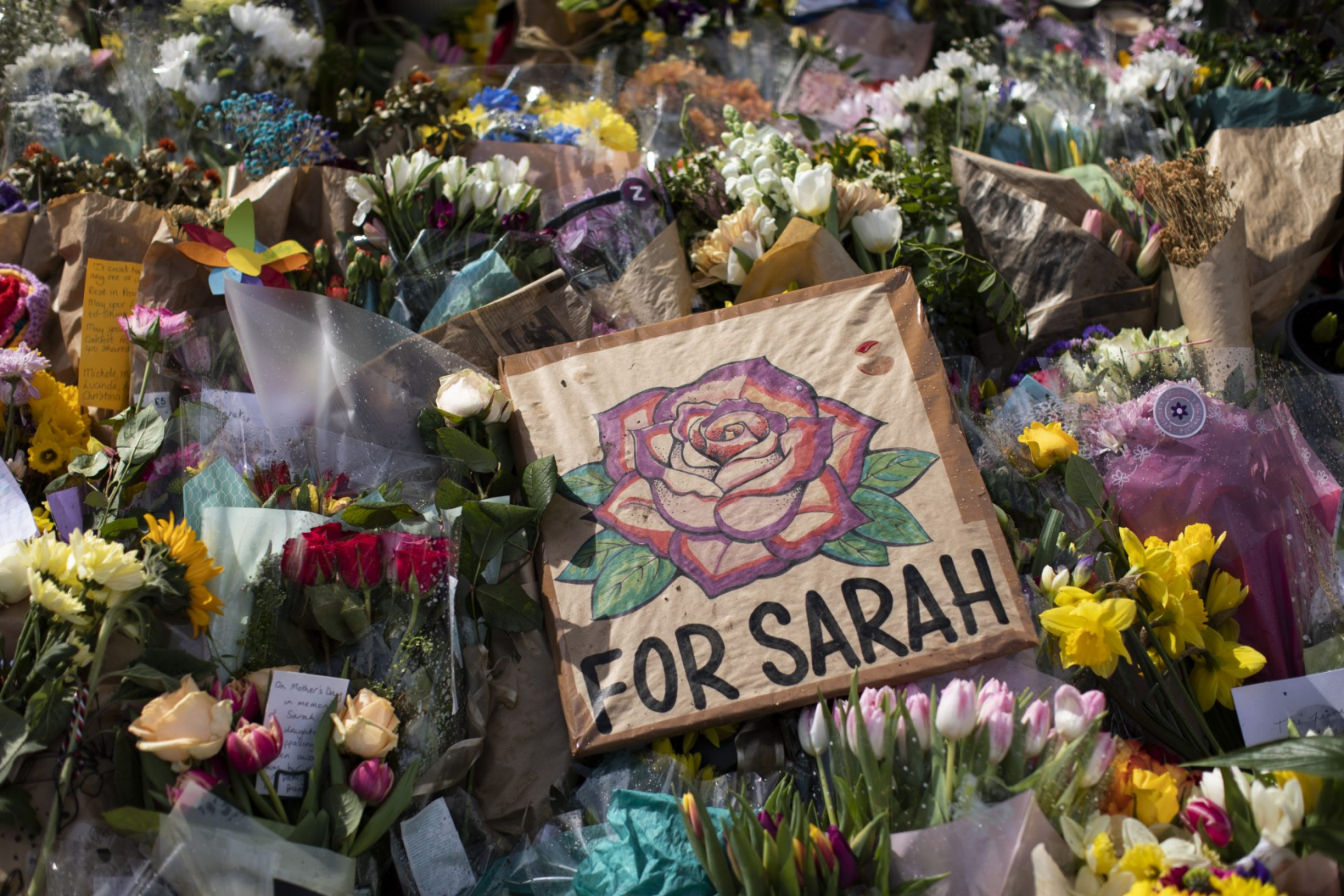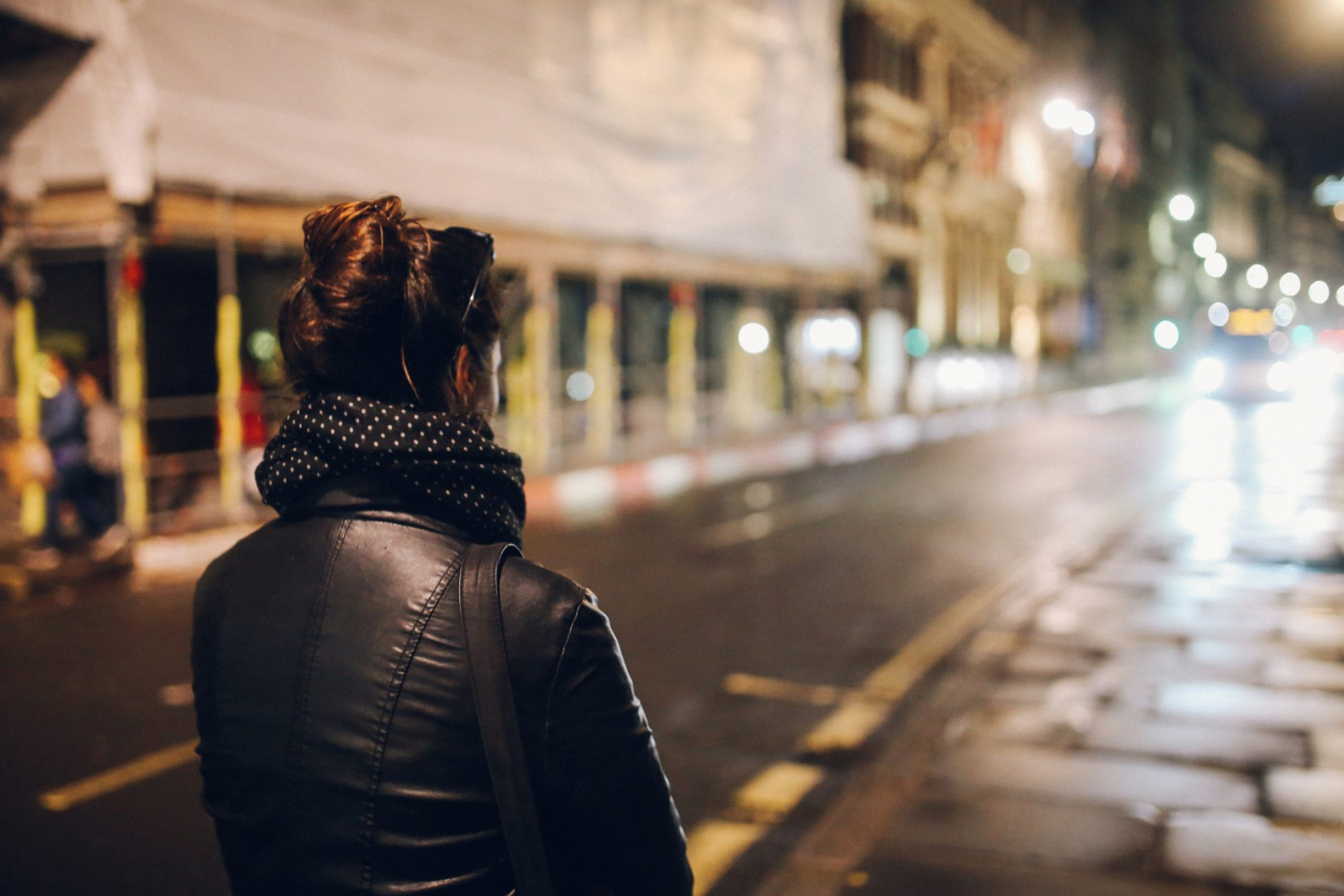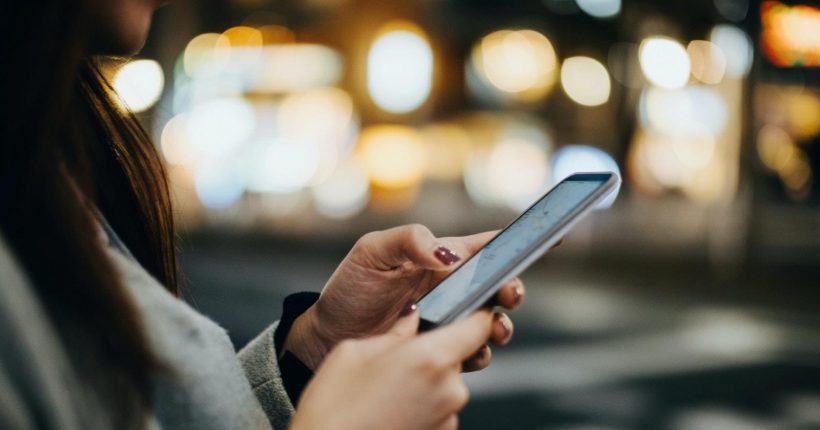Written by Lauren Geall
As Stylist’s digital writer, Lauren Geall writes on topics including mental health, wellbeing and work. She’s also a big fan of houseplants and likes to dabble in film and TV from time-to-time.
Over the last year, we’ve seen countless attempts to ‘innovate away’ the issue of male violence against women. But can technology ever provide a solution to such a systemic problem? Stylist investigates.
Sarah Everard. Bibaa Henry. Nicole Smallman. Sabina Nessa. Ashling Murphy. Over the last two years, the news has been dominated by stories about women who have lost their lives to male violence.
This is, of course, nothing new. While the issue of male violence against women may have seemed more prominent due to the extent of news coverage dedicated to it over the last 24 months, women have been facing this reality for years: in 2020, a report from the Femicide Census revealed that at least 1,425 women were killed by men in the UK from 2009-2018, equating to one death every three days.
Time and time again, women have watched as society explodes in outrage at the death of another woman, only to let the issue slip back into obscurity without any meaningful change taking place.
However, when news of Sarah Everard’s murder first broke in March last year, there was hope that things might be different – that real change could happen. Not only did conversations about women’s safety dominate the headlines, but the government and police forces faced newfound pressure to offer practical solutions to protect women and girls from harm on the UK’s streets.
But despite the Home Office committing to launching a multimillion-pound communications campaign “with a focus on targeting perpetrators and harmful misogynistic attitudes” – the central demand of Stylist’s A Fearless Future initiative – as part of the government’s tackling violence against women and girls strategy released in July last year, very little progress has been made towards making this campaign a reality.
In fact, almost one year on from Everard’s murder, very little has actually been achieved – thanks in no small part to the technological focus which has subsumed discussion.

Over the last year we’ve seen countless attempts – both by the government and the private sector – to ‘innovate’ our way out of this crisis. From the government-backed app which allows friends and family to track the user on their walk home and plans for increased CCTV to a dedicated phoneline and smartwatch software that uses artificial intelligence to ‘recognise distress’, technology has repeatedly been positioned as the solution to male violence.
Besides doing nothing to address the core issue at the heart of this problem – the violent behaviour of men – using technology to keep women safe isn’t always the win-win approach it’s cracked out to be.
“The motivation for many technological initiatives that aim to keep women safe is rooted in our deeply entrenched belief that technology can solve problems efficiently and without any discrimination or bias – what I often call the intertwined myth of efficiency and neutrality,” explains Trang Le, a technologies and gender expert from the Communications and Media Faculty at Melbourne’s Monash University.
While Le acknowledges that the idea of an efficient ‘fix-all’ solution can be tempting to pursue – especially at a time when countries across the world are facing economic difficulties due to the pandemic – she’s keen to stress that technology is not as efficient and neutral as it’s often perceived to be.
In fact, she believes relying on technology to tackle the issue of male violence could lead to a whole host of problems, especially when it comes to how women’s agency is understood and treated.
“The recurring narrative of police and partners as ‘protectors’ and women as ‘vulnerable’ when it comes to these solutions implies flawed, if not toxic, logic,” she says. “It feminises women into the position of victims even before an attack occurs – presenting them as subjects of fear, defencelessness, and therefore requiring protection.”
Le continues: “All too often, the promotion materials of these apps imagine a (masculinised) protector such as boyfriends or the police. When such masculinised power is championed as the default saviour against sexual violence, patriarchal notions about women’s vulnerability are entrenched.”
As well as giving abusers more tools to track their victims, Le also believes apps that allow users to mark particular streets or routes as ‘safe’ and ‘unsafe’ and inform the police of these concerns could lead to further stigmatisation of marginalised communities.
“Personal reviews of places can’t be seen as neutral evaluation, as they can be driven by racist and classist prejudices,” she points out. “The adoption of data-driven policing technologies will then create a self-fulfilling prophecy: there will be more arrests in areas with a higher police presence, consequently justifying the over-policing on them without ever resolving the root cause of male violence.”

As amazing as it would be if we could solve male violence against women with technology, it’s just not going to happen. However, that doesn’t mean there isn’t space for technology to make a difference – especially until the bigger, long-term solutions take force. In fact, women have been using technology to keep themselves safe for years, whether by sending their location to a friend or texting a family member when they get home.
And some of the new apps and phonelines invented over the last couple of years are helping women to feel a little safer on the UK’s streets – while also acknowledging that they’re not solving the overriding issue.
WalkSafe, which is one of the fastest-growing safety apps in the UK, is one such app. It’s had more than 560,000 downloads since it was first launched, and while it’s founder Emma Kaye – who set up the app after experiencing harassment, groping and flashing – understands it’s not the answer, she’s happy that women have somewhere to turn when they’re feeling unsafe.
She told the BBC: “Our app is really bitter-sweet because, of course, we love that we’re busy. However, we really wish it didn’t have to exist. No-one wants to live in a world where we need a safety app, but sadly there is a place for it. Our app encourages people to have precautionary measures to avoid crime, rather than reactionary measures when in an unfortunate situation.”
If one thing’s for sure, it’s that we need a multi-disciplinary approach to male violence against women, rather than one, singular focus.
“Male violence is a social issue and we need a societal approach,” Le explains. “There will be no universal solution – and whatever we come up with must be contextually specific and sustainable, in the sense that it must attend to the underlying, systemic causes.”
She continues: “I would like to see the debate shifting from women’s safety to male violence. This issue continues to be framed semantically as some kind of perpetual risk just lingering in the external environment, like a virus a woman might catch anytime, but this kind of language renders the perpetrators absolutely invisible.
“Until we confront the culture of male privilege enabling sexual violence, accessorising women with more tools and apps will be just another solution in search of a problem.”
With the support of more than 60 experts, MPs and public figures, Stylist is calling on the government to launch a long-term public campaign challenging the attitudes behind male violence against women – aimed directly at men. Find out more about our call for #AFearlessFuture.
Images: Getty
Source: Read Full Article






